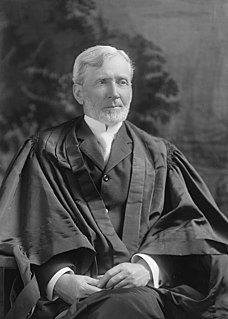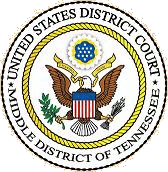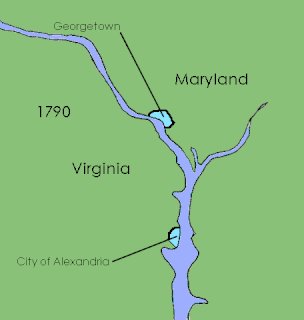
The United States courts of appeals or circuit courts are the intermediate appellate courts of the United States federal court system. The courts are divided into 13 circuits, and each hears appeals from the district courts within its borders, or in some instances from other designated federal courts and administrative agencies. Appeals from the courts of appeals are taken to the U.S. Supreme Court.

The federal government of the United States is the national government of the United States, a federal republic in North America, composed of 50 states, a federal district, five major self-governing territories and several island possessions. The federal government is composed of three distinct branches: legislative, executive and judicial, whose powers are vested by the U.S. Constitution in the Congress, the president and the federal courts, respectively. The powers and duties of these branches are further defined by acts of Congress, including the creation of executive departments and courts inferior to the Supreme Court.
United States v. Cruikshank, 92 U.S. 542 (1876), was an important United States Supreme Court case in which the Court held that the Bill of Rights did not apply to private actors or to state governments despite the adoption of the Fourteenth Amendment. Decided during the Reconstruction Era, the case represented a major blow to federal efforts to protect the civil rights of African Americans.

The District of Columbia statehood movement is a political movement that advocates making the District of Columbia a U.S. state. The District of Columbia is a federal district under the direct jurisdiction of the United States Congress. Statehood would grant the District voting representation in the Congress and full control over local affairs. For most of the modern statehood movement, the new state's name would have been "New Columbia", although the Washington, D.C. Admission Act of 2019 refers to the proposed state as "Washington, Douglass Commonwealth."

The Judiciary Act of 1789 was a United States federal statute adopted on September 24, 1789, in the first session of the First United States Congress. It established the federal judiciary of the United States. Article III, Section 1 of the Constitution prescribed that the "judicial power of the United States, shall be vested in one Supreme Court, and such inferior Courts" as Congress saw fit to establish. It made no provision for the composition or procedures of any of the courts, leaving this to Congress to decide.

Joseph McKenna was an American politician who served in all three branches of the U.S. federal government, as a member of the U.S. House of Representatives, as U.S. Attorney General and as an Associate Justice of the Supreme Court. He is one of seventeen members of the House of Representatives who subsequently served on the Supreme Court.

District of Columbia home rule is District of Columbia residents' ability to govern their local affairs. As the federal capital, the constitution grants the United States Congress exclusive jurisdiction over the District in "all cases whatsoever".

The County of Washington was one of five original political entities within the District of Columbia, the capital of the United States. Formed by the Organic Act of 1801 from parts of Montgomery and Prince George's County, Maryland, Washington County referred to all unincorporated parts of the District of Columbia "on the east side of the Potomac, together with the islands therein." The bed of the Potomac River was considered to be part of Washington County as well.
The United States territorial courts are tribunals established in territories of the United States by the United States Congress, pursuant to its power under Article Four of the United States Constitution, the Territorial Clause. Most United States territorial courts are defunct because the territories under their jurisdiction have become states or been retroceded.

Afroyim v. Rusk, 387 U.S. 253 (1967), is a major United States Supreme Court case in which the Court ruled that citizens of the United States may not be deprived of their citizenship involuntarily. The U.S. government had attempted to revoke the citizenship of Beys Afroyim, a man born in Poland, because he had cast a vote in an Israeli election after becoming a naturalized U.S. citizen. The Supreme Court decided that Afroyim's right to retain his citizenship was guaranteed by the Citizenship Clause of the Fourteenth Amendment to the Constitution. In so doing, the Court struck down a federal law mandating loss of U.S. citizenship for voting in a foreign election—thereby overruling one of its own precedents, Perez v. Brownell (1958), in which it had upheld loss of citizenship under similar circumstances less than a decade earlier.

The United States District Court for the Middle District of Tennessee is the federal trial court for most of Middle Tennessee. Based at the Estes Kefauver Federal Building and United States Courthouse in Nashville, it was created in 1839 when Congress added a third district to the state. Tennessee—along with Kentucky, Ohio, and Michigan—is located within the area covered by United States Court of Appeals for the Sixth Circuit, and appeals are taken to that court.
United States v. Kagama, 118 U.S. 375 (1886), was a United States Supreme Court case that upheld the constitutionality of the Major Crimes Act of 1885. This Congressional act gave the federal courts jurisdiction in certain cases of Indian-on-Indian crimes, even if the crimes were committed on an Indian reservation. Kagama, a Yurok Native American (Indian) accused of murder, was selected as a test case by the Department of Justice to test the constitutionality of the Act.
Will v. Michigan Dept. of State Police, 491 U.S. 58 (1989), was a case decided by the United States Supreme Court, in which the Court held that States and their officials acting in their official capacity are not persons when sued for monetary damages under the Civil Rights Act of 1871.
Skidmore v. Swift & Co., 323 U.S. 134 (1944), is a United States Supreme Court decision holding that an administrative agency's interpretative rules deserve deference according to their persuasiveness. The court adopted a case-by-case test, which considers the rulings, interpretations, and opinions of the administrator. The Supreme Court reversed and remanded the case for further proceedings.
Payne v. Tennessee, 501 U.S. 808 (1991), was a United States Supreme Court case which held that testimony in the form of a victim impact statement is admissible during the sentencing phase of a trial and, in death penalty cases, does not violate the Cruel and Unusual Punishment Clause of the Eighth Amendment. Payne narrowed two of the Courts' precedents: Booth v. Maryland (1987) and South Carolina v. Gathers (1989).
The United States Circuit Court of the District of Columbia is a former United States federal court, which existed from 1801 to 1863. The court was created by the District of Columbia Organic Act of 1801.

The Marshall Court (1801–1835) heard forty-one criminal law cases, slightly more than one per year. Among such cases are United States v. Simms (1803), United States v. More (1805), Ex parte Bollman (1807), United States v. Hudson (1812), Cohens v. Virginia (1821), United States v. Perez (1824), Worcester v. Georgia (1832), and United States v. Wilson (1833).
United States v. More, 7 U.S. 159 (1805), was a United States Supreme Court case in which the Court held that it had no jurisdiction to hear appeals from criminal cases in the circuit courts by writs of error. Relying on the Exceptions Clause, More held that Congress's enumerated grants of appellate jurisdiction to the Court operated as an exercise of Congress's power to eliminate all other forms of appellate jurisdiction.
Chy Lung v. Freeman, 92 U.S. 275 (1876), was a United States Supreme Court case where the Supreme Court ruled that the power to set rules surrounding immigration, and to manage foreign relations, rested with the United States Federal Government, rather than with the states. The case has been cited in other Supreme Court cases related to government authority on matters relating to immigration policy and immigration enforcement, most recently in Arizona v. United States (2012).











